Atelier ARS screens Mexican house behind stone wall and latticework
Mexican studio Atelier ARS has enclosed this white house with latticed shutters behind a stone wall, reinterpreting the traditional local architecture of Mexico's Lake Chapala (+ slideshow).
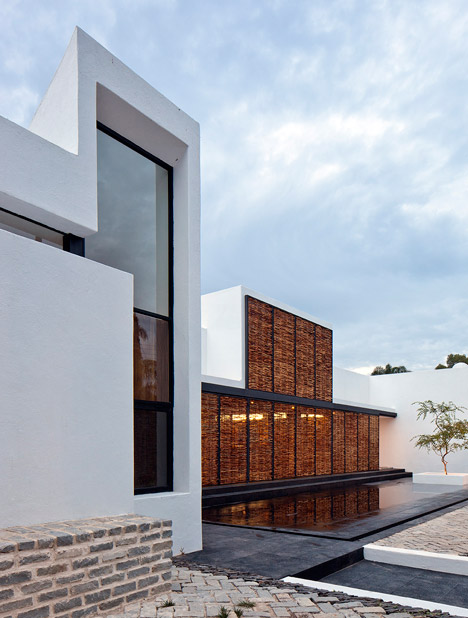
The house stands in a mid-twentieth-century urban development near Lake Chapala in western Mexico, and Atelier ARS sought to recreate elements of the traditional local architecture behind its walls.
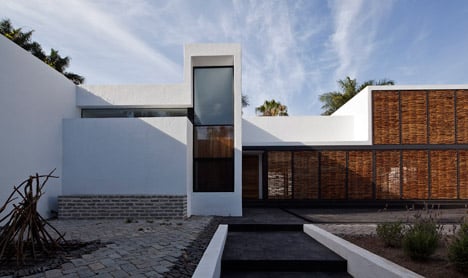
"The architecture in this area has been conceived as a folkloric, stylistic reinterpretation of local tradition," said architects Alejandro Guerrero and Andrea Soto. "So we proposed a project that relates deeply to the natural and cultural environment, even if it can't have direct views of the lake."
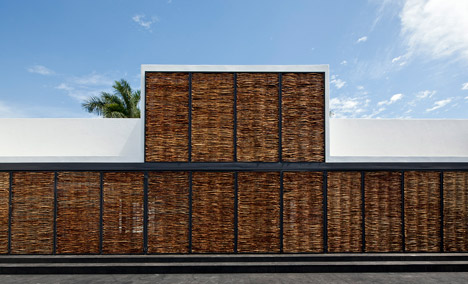
The front wall was made by a local stonemason, who referenced the stone pavements on the small island of Mezcala – a former prison in the middle of the lake.
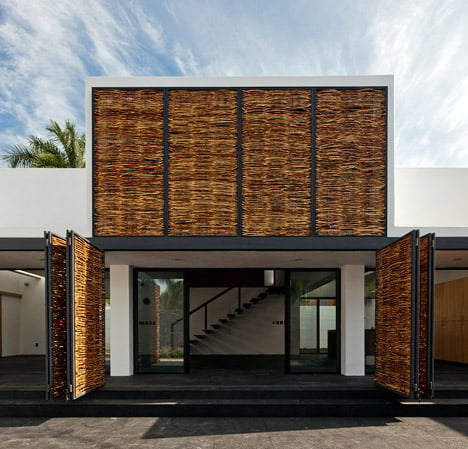
Behind this, the south-facing front of the house is covered in a lattice made from Palo Dulce trees, which were made by a local craftsman and designed to filter sunlight coming inside.
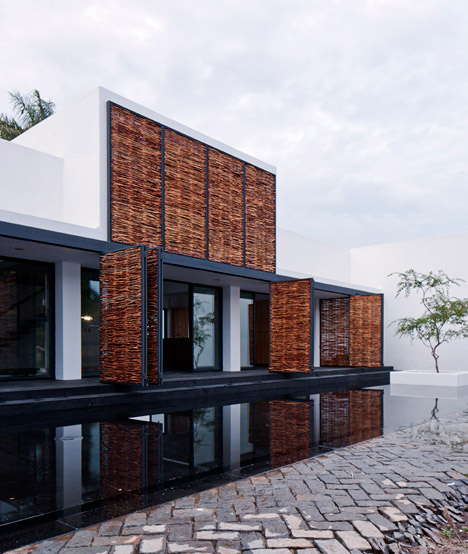
The doors behind the latticework also fold back, allowing the residents to open up the home's ground floor entirely to a paved patio at the front.
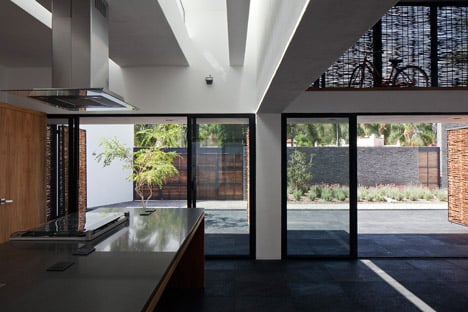
When it rains, water is collected on the roof and channelled into this patio to create a shallow reflecting pool. Next to it, Atelier ARS added a garden that will grow into a lush green space, echoing by the nearby forest and lake.
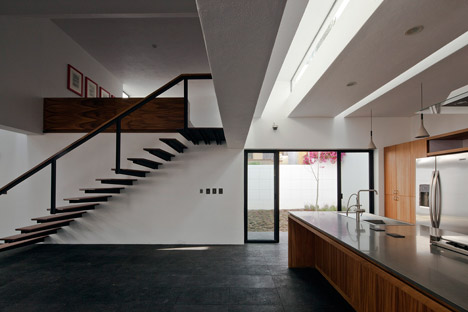
"Together with the rear garden, it will make the interior of the house feel like it's surrounded by greenery," said Guerrero and Soto. "The ultimate aim of this project is to go beyond a house with a garden, to a house placed within a garden."
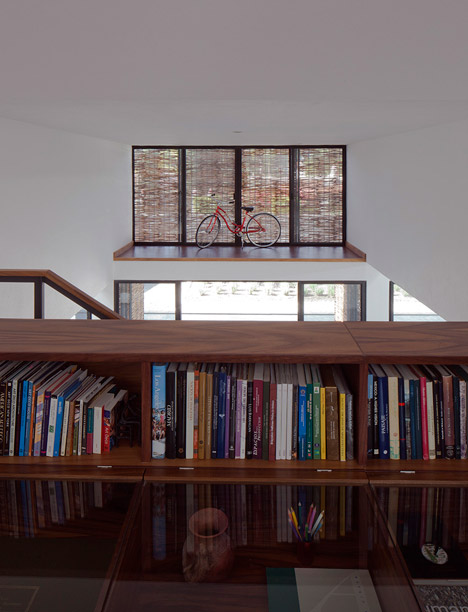
The kitchen, dining area and living space are arranged open-plan on the ground floor. Periscope-shaped voids have been cut into the ceiling to bring in a softer quality of light than a traditional rooflight.
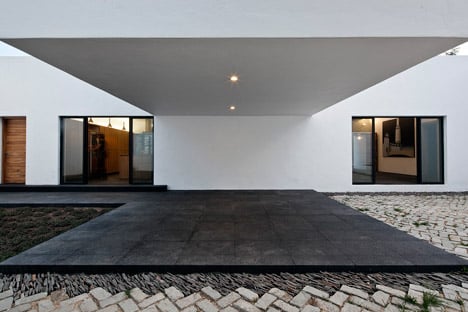
A staircase crosses the back of the ground floor, leading up to a mezzanine studio that is cantilevered out the back and provides a shaded area in the garden below.
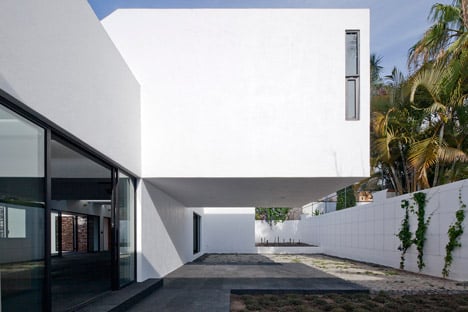
To the side of the house, a second rectangular wing housing two bedrooms and bathrooms has been built at a right angle. It has been positioned to avoid solar glare from the west in the evenings and has full-height glazing at the front to attract light from the south during the day.
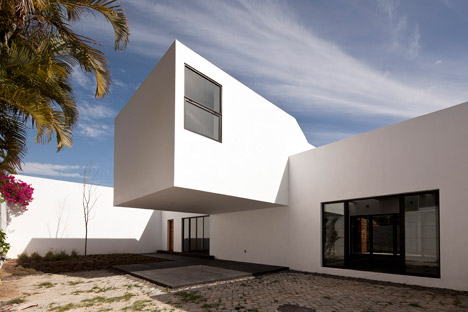
Photography is by Onnis Luque.
Here is some more text from Atelier ARS°:
House and Studio, Mar Chapálico, Mexico
Building a house for an urban geographer and a great connoisseur of architecture and city meant for us the possibility to experiment with a certain way of understanding the architectural project. The plot is in a place called La Floresta – The Forest – a mid-century urbanisation as a garden city aside Chapala Lake in west Mexico, which since a long time has been known as a retirement place for foreigners due to its great weather. This urbanisation has two leading characteristics: the urban space has a high quality due the wide streets and its interaction with the landscape – lake and mountains – and also by the existing vegetation, however the architecture in this area has been conceived as a folkloric, stylistic reinterpretation of local tradition. So we proposed a project that relates deeply to the natural and cultural environment, even if it can’t have direct views of the lake.
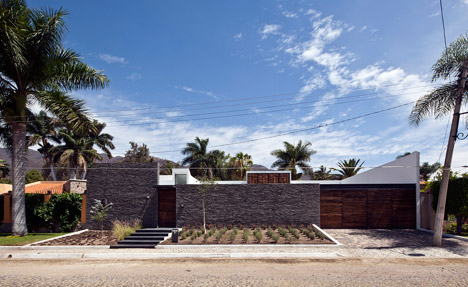
Mar Chapálico – Chapalico Sea – is the name used by old inhabitants of this place to name the lake alluding to its big size. The lake is a place that was formed by volcanic activity millions years ago. The mountains that surround it emerged and an existing fjord was divided to produce its shape. That is the reason why we can observe a system of lakes, from Lake Chapala to the Pacific Ocean through Colima state. The reason of the attractive climate is the lake itself, and its capacity of making grow exuberant vegetation. During the rainy season it is possible to see how the water comes from underground to the surface, which shows us the run-offs that happen all the time in the direction of the lake.
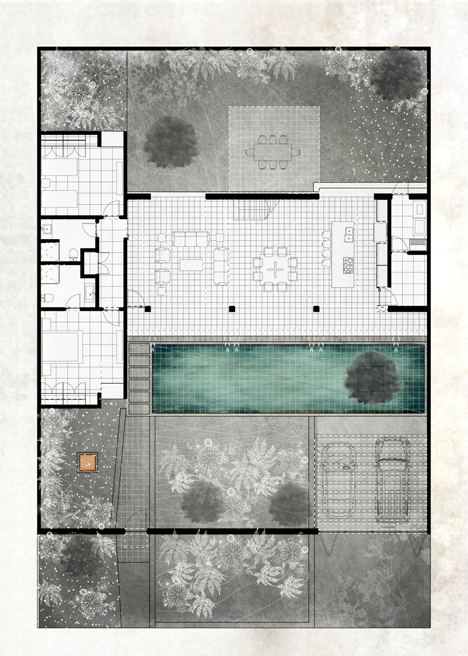
The idea of the project is to build a home that is capable to evoke the natural cycle of the place and understand their privileged climate and landscape. That is the reason of the roof of the house to have the capacity to collect the rainwater and conduce it through downspouts and make it emerge from the ground of the reflecting pool located in front of the house, such as the surrounding landscape does during the rainy season. To complete this idea of "territorial construction" just beside the reflecting pool, we have built a garden. Together with the rear garden, it will make the interior of the house feel like it's surrounded by greenery.
The initial scheme of the dwelling is made setting back the public areas facing north-south and also making a frontal enclosure space. The volume containing the private areas was placed perpendicularly to the public area of the house, also avoiding west sun.
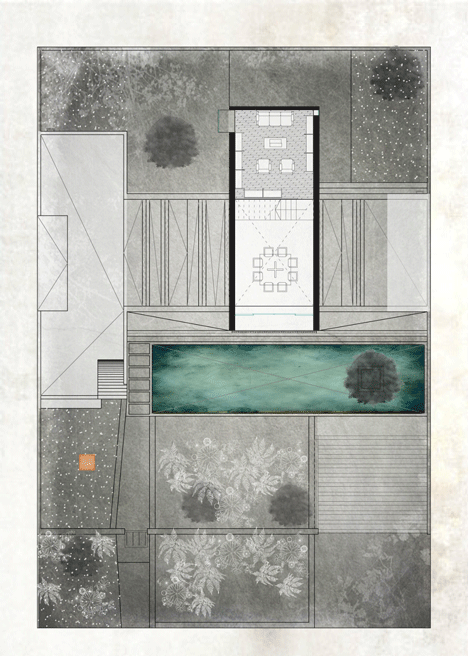
The last piece of the house is the studio space that was placed into the public area as a mezzanine with the dining room. The cantilevered condition of the studio makes a terrace under it and produces a shadowed space to obtain a fresh climate for this area in the back yard. The ultimate aim of this project is to go beyond a house with a garden, to a house placed within a garden.
The objective was to build a space surrounded by greenery and determined by the light filtered through the structural interstices of the roof: a system of u-shaped concrete girders that catch the rainwater and sunlight, producing an always-changing space.
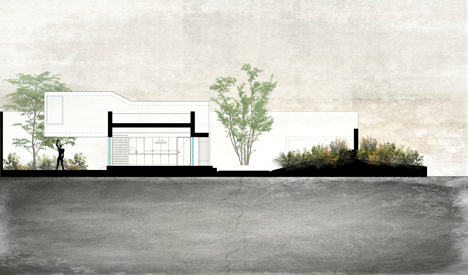
As a way to relate the house with the local artisanal tradition, we proposed two elements: a latticework for the south facade made with the wood of a tree named Palo Dulce. This piece is able to attenuate the sunlight, to produce a particular interior atmosphere. It can also fold to manipulate and determine the degree of intimacy of the interior space. This lattice was woven by a fisherman of a near town, and informs us about craft knowledge still found in the region. The second element is the stone wall, which limits the frontal enclosure space. It was made by a local stonemason evoking the stone pavements found in Mezcala, a small isle located in the lake, which was used as a jail many years ago.
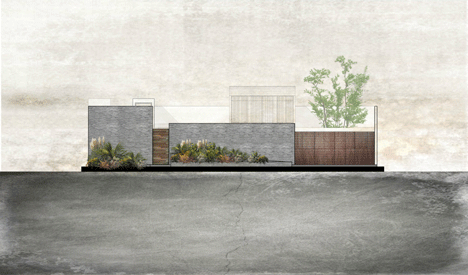
Architect: Alejandro Guerrero Gutiérrez and Andrea Soto Morfín.
Covered space: 234.53 square metres; plot: 546 square metres.